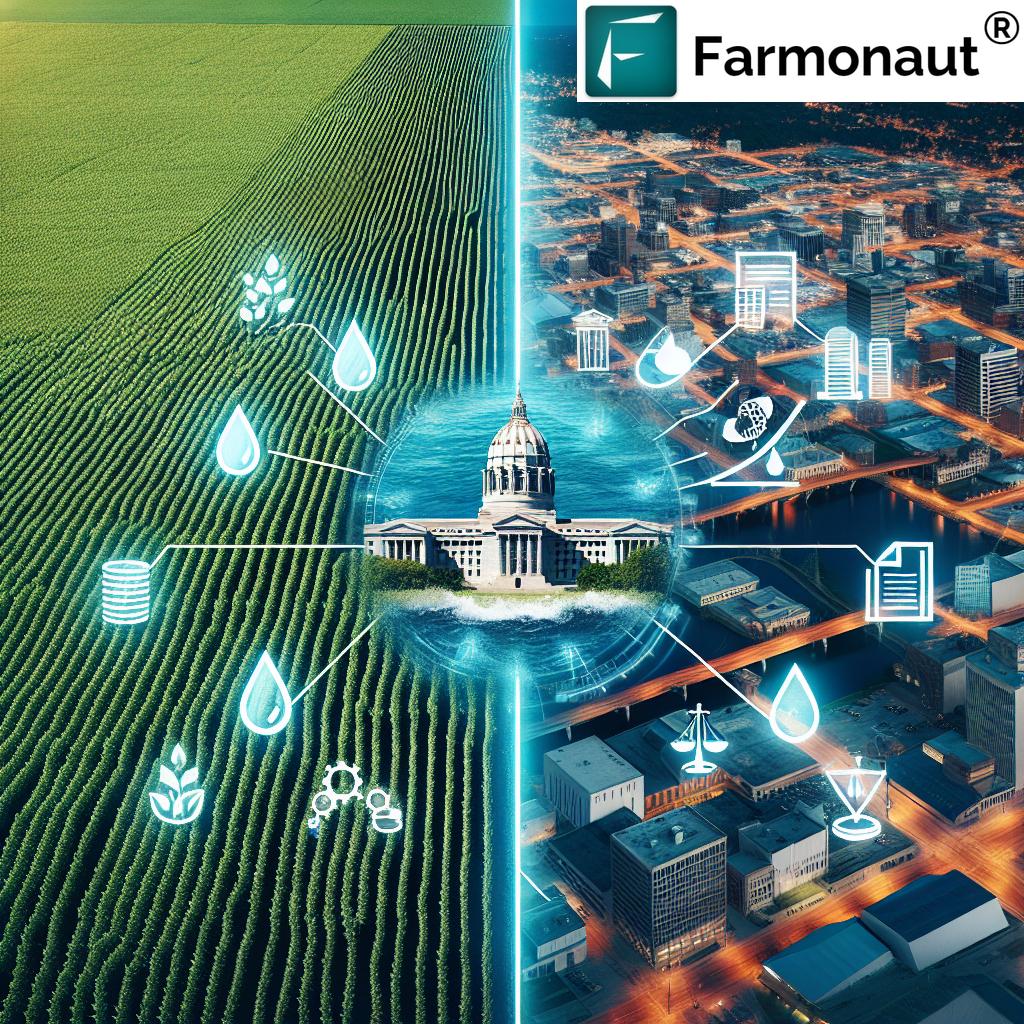Unveiling the Hidden Culprit: How California’s Agricultural Practices Impact Air Quality in the Salton Sea Basin

“Soil bacteria in California’s Salton Sea basin contribute up to 40% of the region’s nitrogen oxide emissions.”
In the heart of Southern California’s Colorado Desert, a silent environmental crisis is unfolding. The Salton Sea basin, located about 100 miles east of San Diego, has long been known for its challenging air quality conditions. However, recent research has unveiled a surprising culprit behind the region’s persistent smog problem: agricultural practices. As we delve into this complex issue, we’ll explore how farming techniques in this arid landscape are contributing to air pollution and examine potential solutions for a more sustainable future.
The Unexpected Source of Air Pollution
For decades, efforts to combat smog in Southern California have primarily focused on reducing emissions from vehicles and industrial operations. However, a groundbreaking study from UC Davis has shed light on a previously overlooked source of pollution: nitrogen oxide emissions from irrigated green spaces and agricultural lands.
The Salton Sea air basin, a region transformed from desert to agricultural powerhouse through intensive irrigation and fertilizer use, is at the center of this environmental challenge. Researchers have discovered that over 11 tons of nitrogen oxides are emitted daily from the soils in this area – a figure that is alarmingly tenfold higher than current estimates provided by air quality regulators.
The Role of Agricultural Practices
Imperial County, which encompasses much of the Salton Sea basin, ranks ninth statewide in agricultural sales. The region’s harsh desert conditions necessitate regular watering of crops like lettuce and broccoli. This intensive farming approach, coupled with excessive fertilizer application, has created a perfect storm for air pollution.
- Excessive Fertilizer Use: Farmers typically apply about twice as much fertilizer as their crops require.
- Soil Bacteria Activity: Excess nitrogen becomes food for soil bacteria, which release nitrogen oxides as a byproduct of their metabolism.
- Irrigation-Induced Emissions: “Pulsing events” occur post-irrigation, leading to temporary spikes in nitrogen oxide emissions.
These agricultural practices not only contribute to local air quality issues but also impact major cities like Los Angeles and San Diego, up to 150 miles away.
The Broader Environmental Context
The air quality concerns in the Salton Sea basin are part of a larger environmental crisis. The Salton Sea itself, once a thriving ecosystem, has become a shrinking body of water plagued by agricultural runoff laden with toxic pesticides and fertilizers. This transformation has led to significant dust pollution, exacerbating respiratory ailments among local communities, particularly children.
“Agricultural practices in Southern California impact air quality in major cities up to 150 miles away.”
To better understand the impact of various agricultural practices on air quality, let’s examine the following comparative analysis:
| Agricultural Practice | Nitrogen Oxide Emissions (kg/hectare/year) | Soil Health Impact | Air Quality Impact | Sustainability Score (1-10) |
|---|---|---|---|---|
| Excessive fertilizer application | 150-200 | High | High | 2 |
| Precision fertilizer management | 50-75 | Low | Medium | 8 |
| Intensive irrigation | 100-150 | Medium | High | 3 |
| Drip irrigation systems | 30-50 | Low | Low | 9 |
| Cover cropping | 20-40 | Low | Low | 9 |
| No-till farming | 40-60 | Low | Medium | 8 |
This table clearly illustrates the significant difference in environmental impact between conventional and sustainable agricultural practices. By adopting more sustainable methods, we can dramatically reduce nitrogen oxide emissions and improve both soil health and air quality.
The Human Cost of Air Pollution
The environmental challenges in the Salton Sea basin have profound impacts on local communities. Daniela Flores of the Imperial Valley Equity & Justice Coalition highlights the struggles faced by families in the region:
- Higher rates of respiratory ailments, especially among children
- Limited outdoor activities due to poor air quality
- Long-standing environmental injustices affecting quality of life
These issues underscore the urgent need for sustainable solutions that balance agricultural productivity with environmental and public health concerns.
Towards Sustainable Agriculture: The Role of Technology
In addressing the complex challenges of agricultural air pollution, innovative technologies and sustainable practices play a crucial role. Companies like Farmonaut are at the forefront of this agricultural revolution, offering solutions that can help mitigate environmental impacts while maintaining food production in harsh desert conditions.
Precision Agriculture: By leveraging satellite imagery and AI-driven insights, farmers can optimize their use of fertilizers and water resources. This precision approach not only reduces excess nitrogen in the soil but also minimizes the release of harmful pollutants.
Smart Irrigation Systems: Advanced irrigation techniques, such as drip irrigation controlled by satellite-based soil moisture monitoring, can significantly reduce water usage and the subsequent “pulsing events” that lead to nitrogen oxide emissions.
Real-time Crop Health Monitoring: Satellite-based crop health monitoring allows farmers to detect issues early and apply targeted interventions, reducing the need for blanket applications of fertilizers and pesticides.
API Integration for Enhanced Farm Management

Implementing Sustainable Practices
To address the air quality issues in the Salton Sea basin, a multi-faceted approach is necessary. Here are some key strategies that can help reduce agricultural air pollution:
- Optimized Fertilizer Management: Implementing precision fertilizer application techniques can significantly reduce excess nitrogen in the soil.
- Improved Irrigation Methods: Adopting efficient irrigation systems like drip irrigation can minimize water waste and reduce emission-causing “pulsing events”.
- Crop Rotation and Cover Cropping: These practices can improve soil health, reduce the need for synthetic fertilizers, and minimize soil disturbance.
- Conservation Tillage: Reducing soil disturbance can help retain soil moisture and organic matter, decreasing the need for intensive irrigation and fertilization.
- Use of Technology: Leveraging precision agriculture tools for real-time crop monitoring and management can optimize resource use and reduce environmental impact.
Explore Farmonaut’s API Developer Docs for Advanced Agricultural Solutions
The Role of Policy and Community Engagement
Addressing the air quality issues in the Salton Sea basin requires more than just technological solutions. It demands a concerted effort from policymakers, farmers, and local communities. Here are some key areas where policy and community engagement can make a difference:
- Regulatory Frameworks: Implementing and enforcing stricter regulations on fertilizer use and irrigation practices.
- Incentive Programs: Developing incentives for farmers who adopt sustainable agricultural practices and technologies.
- Education and Outreach: Providing resources and training to farmers on sustainable farming techniques and the environmental impacts of their practices.
- Community Involvement: Engaging local communities in environmental monitoring and decision-making processes.
- Research Funding: Allocating resources for continued research into sustainable agriculture and its impact on air quality.
The Economic Perspective
While transitioning to more sustainable agricultural practices may seem costly in the short term, it’s important to consider the long-term economic benefits:
- Reduced Input Costs: Precision agriculture can lead to significant savings on fertilizers, water, and other resources.
- Improved Crop Yields: Sustainable practices often result in healthier soil and more resilient crops, potentially increasing yields over time.
- Health Cost Savings: Reducing air pollution can lead to lower healthcare costs for local communities.
- Ecosystem Services: Improved environmental conditions can support valuable ecosystem services, such as pollination and natural pest control.
- Market Opportunities: Growing consumer demand for sustainably produced food can open new market opportunities for farmers adopting these practices.
The Future of Farming in the Salton Sea Basin
As we look to the future, it’s clear that the agricultural sector in the Salton Sea basin must evolve to meet the dual challenges of food production and environmental stewardship. This evolution will likely include:
- Technological Integration: Greater adoption of precision agriculture technologies, including satellite monitoring, AI-driven decision support systems, and IoT devices for farm management.
- Water-Efficient Crops: Research and development of crop varieties better suited to arid conditions, reducing the need for intensive irrigation.
- Circular Agriculture: Implementing systems that recycle nutrients and water, minimizing waste and environmental impact.
- Carbon Farming: Exploring agricultural practices that sequester carbon, potentially offsetting emissions and providing additional income streams for farmers.
- Diversification: Encouraging a more diverse agricultural landscape that includes a mix of food crops, cover crops, and potentially even renewable energy production.
Conclusion: A Call for Sustainable Change
The discovery of soil emissions as a major contributor to air pollution in the Salton Sea basin represents both a challenge and an opportunity. By understanding the complex relationship between agricultural practices, soil health, and air quality, we can develop targeted solutions that benefit both farmers and local communities.
The path forward requires a collaborative effort involving farmers, researchers, policymakers, and technology providers. By embracing sustainable agriculture practices and leveraging innovative technologies, we can work towards a future where food production and environmental health are not at odds but in harmony.
As we continue to unveil the hidden culprits behind air pollution in agricultural regions, let us use this knowledge to drive positive change. The health of our communities, the sustainability of our food systems, and the quality of our environment depend on our ability to adapt and innovate in the face of these challenges.
FAQ Section
Q: How do agricultural practices in the Salton Sea basin contribute to air pollution?
A: Excessive use of fertilizers and intensive irrigation leads to increased nitrogen oxide emissions from soil bacteria. These emissions, along with dust from dried agricultural lands, significantly impact local air quality.
Q: What are some sustainable agricultural practices that can help reduce air pollution?
A: Sustainable practices include precision fertilizer management, efficient irrigation systems like drip irrigation, cover cropping, and no-till farming. These methods can significantly reduce nitrogen oxide emissions and improve soil health.
Q: How does technology play a role in addressing agricultural air pollution?
A: Technologies like satellite-based crop monitoring, AI-driven advisory systems, and precision agriculture tools help farmers optimize resource use, reducing the need for excessive fertilization and irrigation that contribute to air pollution.
Q: What are the health impacts of agricultural air pollution in the Salton Sea region?
A: Local communities, especially children, experience higher rates of respiratory ailments due to poor air quality. The pollution also limits outdoor activities and affects overall quality of life.
Q: How can policymakers and communities contribute to solving this issue?
A: Policymakers can implement stricter regulations on agricultural practices and create incentive programs for sustainable farming. Communities can engage in environmental monitoring and support local initiatives for sustainable agriculture.




















